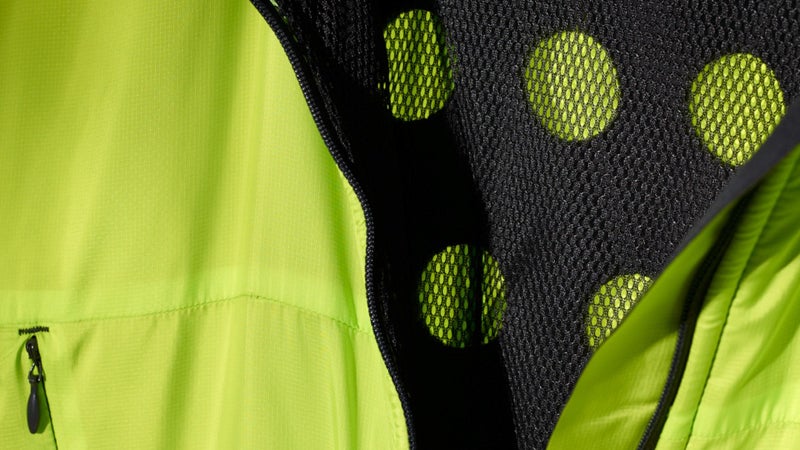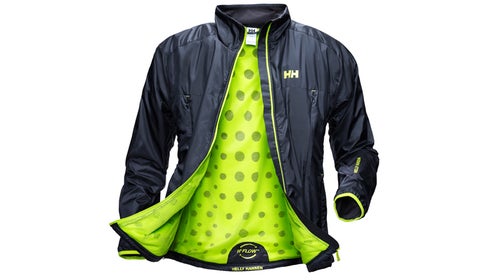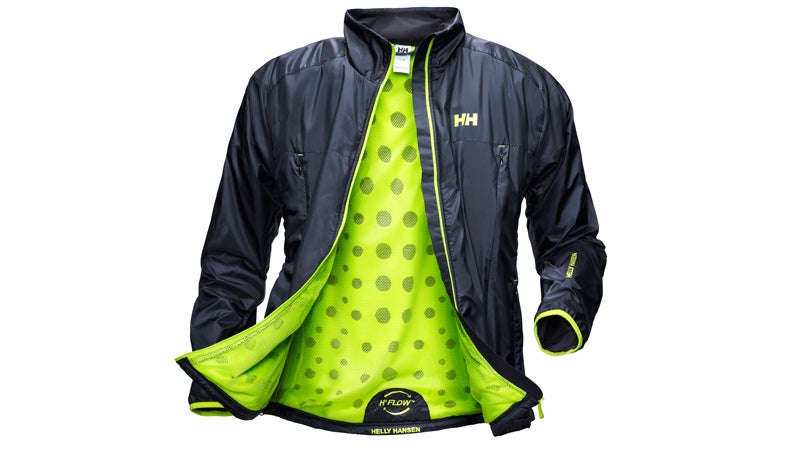The short answer is yes, H2Flow technology works really well.
I imagine you might be asking, “What the heck is this system?” Well, here’s how Helly Hansen : “The insulation concept uses air to provide warmth and ventilation and lets you control the airflow that cools you down when necessary…We had the idea of a system that could provide heat when needed, but with a high volume of mechanical ventilation so you could get rid of the heat and cool off when you warmed up.”
That sounds about right. Jackets with this insulation have kept me comfortable in a broad range of temperatures—from negative 22 to 36 degrees Fahrenheit—and I’m continually impressed by how warm they are without sacrificing breathability. And I have to admit I was initially skeptical.
I first saw H2Flow two years ago when I’d been working for ���ϳԹ��� magazine just long enough to become jaded about membrane marketing speak. The original H2Flow jacket looked like it was lined with Swiss cheese—it had holes to create air space, or “exaggerated air cells”—and I relentlessly made fun of the look.

I’ve become a believer since that first encounter. The company now uses H2Flow in 30 percent of its apparel, much of which I’ve tested in a wide variety of conditions. I’ve taken a Helly Hansen jacket heli-skiing in the Purcells, on a nerve-wracking boot pack at Kicking Horse Resort in the Canadian Rockies, hiking to bowls in Telluride, and on chairlifts across the country.
During all these adventures, I have remained surprisingly comfortable despite a vast range of temperatures and activities. My wife’s all-time favorite jacket——also features the tech.
“This technology actually started where this company started, with our sailors,” says Wintersport and Training Category Manager for Helly Hansen Philip Tavell. Helly Hansen-sponsored sailors were cutting holes in their fleeces and then putting waterproof sailing jackets over the pocked garments.
They found the holes kept them very warm during high-output activities because their bodies would heat the air inside the spaces. That heat was then easy to vent once the athletes started overheating—all they had to do was open a zipper or two.
It took about two years to develop the first H2Flow jacket—a windbreaker lined with the Swiss cheese-like fleece. Since then, the company has implemented the technology in three ways—with holes, channels, and mesh. According to Tavell, H2Flow is up to 20 percent more efficient at venting heat than the same jacket without the technology.
“I have a lot of different equipment now and this is all I use,” Helly Hansen sponsored sailor Thomas Coville told me shortly after his fourth solo around-the-world sailing attempt. He’d brought a single pair of Helly Hansen pants and a single jacket on the trip. “It’s efficient in any condition—cool or hot temperatures,” Coville said.
Now he’s headed on a mountaineering trip during which he’ll ascend more than 13,000 feet. Which jacket and pants will he climb in? You guessed it.


